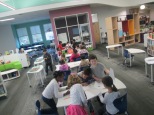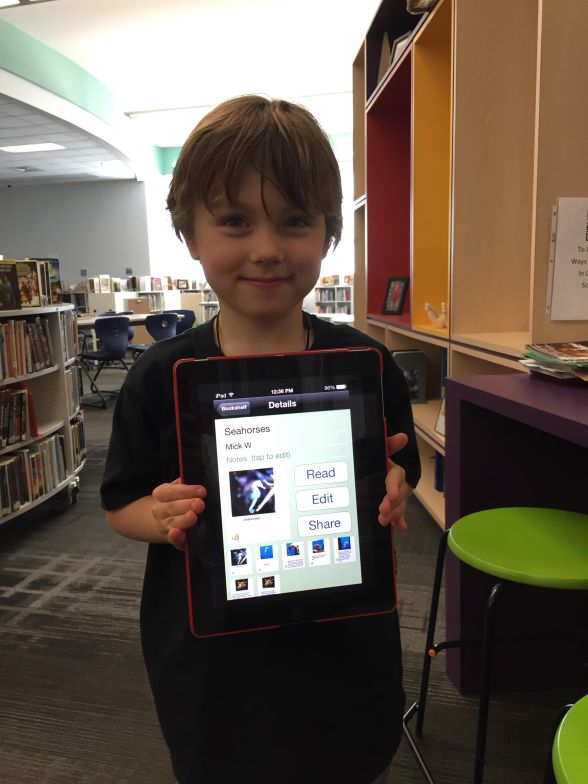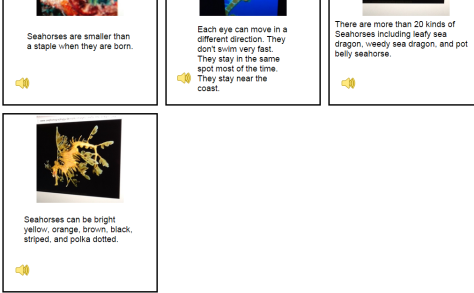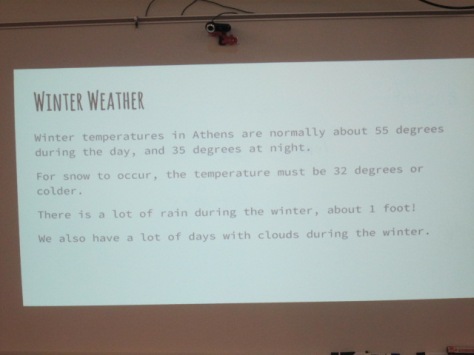
I’m so excited about a current opportunity we have with classes around the world to think about winter where we live. Shannon Miller and Cantata Learning recently invited schools to research winter in their areas and for students to work together around the globe to create a collaborative e-book filled with information, personal narratives, poems, illustrations, and songs.
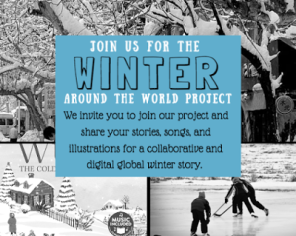
All classes participating in the project started by reading and listening to the Cantata Learning book Winter the Coldest Season of All.
From there, different classes branched off to do different types of projects. In Ms. Ramseyer’s 2nd grade class, we focused on winter in Athens, GA using notes from her husband Craig, who is studying to be a meteorologist.
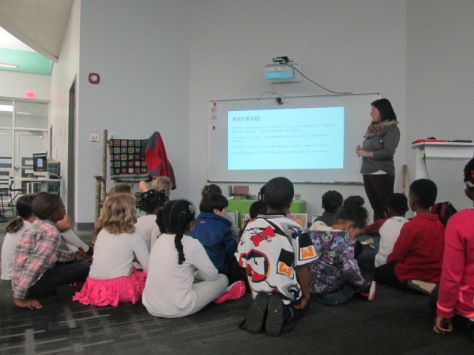
He gave us facts about the average temperatures and snowfall in Athens each winter. I think we all think of snow for winter, but in reality, we really don’t get much snow or even cold here in Georgia. We were trying to get students to think about that.
After gathering our facts, we had students reflect on their own experience since that is a big part of the research process, especially about your own community. I had students turn and talk to a partner about a variety of winter topics: clothes, events, food, school, sounds. Each time they talked, I ran around with the keyboard and typed the ideas into a shared doc that could be used for our project.
Ms. Ramseyer let students group themselves into groups of 4. Each group needed 2 authors and 2 illustrators. They could decide what kind of text they wanted to write such as personal narrative, poetry, or informational. They had to make a plan before they could start working. I spread out materials for them to use such as white paper, pencils, and crayons. It was a lot of fun to walk around to tables and talk with them about their decisions while they worked. I often found myself asking the illustrators to check the text that the authors were creating so that their illustrations were matching or extending the text. There were a few arguments along the way, but each quarrel was an opportunity for a connection back to how books are created. As usual, there were unexpected moments that were priceless, such as when a student noticed that the illustrators were only drawing boys into the illustrations. She called him out and said he needed to add some girls. We talked about diversity in illustration and what that might mean and why that might be important. It was fascinating. The priceless moment came when the second grader said:
Students will continue working on this project in writing workshop in the classroom before they come back to me to digitize the work and add it to the collaborative Google slide ebook.
Kelly Hocking’s Kindergarten class is planning to write a song about winter in Athens. She often uses ukuleles in her class and incorporates song writing. After listening to the book, students explored a tool called Beatlab to tinker with creating a beat. They will use this tool to establish a beat for their song about winter.
In the library, we also explored the book Hip Hop Speaks to Children collected by Nikki Giovanni. I selected a few poems from this book that had an established beat such as Things by Eloise Greenfield as well as poems that had actual music with them on the accompanying CD such as Ham N Eggs by A Tribe Called Quest. For poems without music, we clapped or snapped along with the rhythm of the poem to see that there was in fact a beat there. For the poems with music, we listened once and then closed our eyes and tried to focus on the various instruments we could hear layered over one another in the background and how they repeated.

We even looked at a video by the famous Kishi Bashi, who is also a parent at our school. He accompanies himself by recording a layer of beats live onstage and looping them with pedals. He performed at our school last year, and the Clarke Central Odyssey crew filmed this song that we used for inspiration.
After the library visit, Ms. Kelly’s class used a Capstone Library book called Winter: Signs of the Season Around North America. They gathered various winter words that might inspire their song. Once the song is written, we will record in the library as well as perform at a school assembly.
I love how student voices from around the world are coming together around a common topic, and I can’t wait to learn about winter through the eyes of students.


